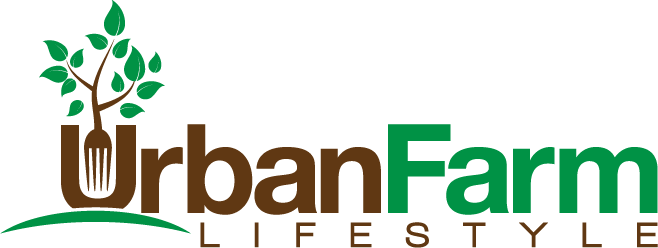Healthy-Sustainable-Regenerative Lifestyle
Lard
I have always loved to cook with cast iron skillets. Using lard to cook with keeps the food from sticking, the food tastes better, and my cast iron stays seasoned.
Enjoy,
David Proctor
We may not live on a farm, but we can grow where we live.
It is all about the soil!
Cooking And Rendering Lard
by David Proctor
February 2, 2023
Urban Farm Lifestyle Magazine Published Weekly
This article is from a post “COOKING WITH LARD AND HOW TO RENDER LARD YOURSELF” from Scratch Farmstead.
“When it comes to cooking fats, there are a lot of options and even conflicting information about which one(s) are the best to use. We’ve been experimenting with different cooking fats for years and our favorite for its properties, versatility, and health benefits is cooking with lard.
In this post, we will give you a complete breakdown of everything to know about cooking with lard and how to render it yourself.
When we began down this homesteading path, we were compelled by the idea of eating nose to tail, letting no part of the animal be wasted. Then as we began raising animals ourselves for meat, this became even more important to us. Part of eating nose to tail meant putting to use the animal fat and learning to cook with things like lard and tallow.
As we began using lard in our home kitchen, we really began to appreciate lard in cooking and understand why this traditional fat was so prized.”

Cast Iron And Lard
What is Lard?
“Lard is the fat from a pig taken from the fattiest portions of the animal, usually the butt, belly, and shoulder. It is white, solid but soft, and when heated it melts down to a rendered lard for common use in home kitchens.
When talking about lard, you will likely hear the term leaf lard. Leaf lard is lard taken from the leaf shaped fat around the pig’s kidneys. This is a particularly prized form of lard as it is generally smoother and creamier than lard taken from other parts of the animal and is especially good for use in baking.”
History of Lard
“For hundreds of years, lard has been the primary cooking fat. This made sense.
Lard was easy to access and is an extremely stable fat meaning it could keep for long periods of time without spoiling. It was kept in pantries and used for everything. Centuries ago, lard was even used to preserve raw meat by covering the meat in lard for long term storage. This is where the term ‘larder’ originated.
So, how did this traditional fat go out of style? In the early 20th century, Upton Sinclair wrote “The Jungle.” While fictional, this story shared grotesque descriptions of the meat processing industry including the procurement of lard.
Then in 1907, hydrogenated cottonseed oil (Crisco) was invented. It looked and acted exactly like lard but without coming from a pig. Ads were run touting the purity of Crisco while slandering the making and use of lard. In the decades that followed lard was out and Crisco and other lab made hydrogenated vegetable oils were in.
Only in recent history is lard making a comeback. The benefits of this traditional fat are being resurrected and the truth about the negative health implications of hydrogenated oils are coming out.”
Is Cooking with Lard Healthy?
“Cooking with lard can without a doubt be part of a healthy diet and lifestyle.”
Lard (like all fats) are a combination of monounsaturated, polyunsaturated, and saturated fats. But lard, like other fats that are solid at room temperature, is higher in saturated fats. Saturated fats have been demonized for being artery clogging, cholesterol raising, and heart disease causing. But new evidence is revealing that the saturated fat in lard might actually be the more healthful choice.
The role of cholesterol is to reduce inflammation in the body. And actually, about 75% of cholesterol is produced from the body itself, and not from food consumption. Therefore, if the body is not intaking enough cholesterol that is needed, it will just make more itself.
The saturated fat in lard is responsible for raising HDL (high density lipoproteins, aka the “good” cholesterol) and changing LDL (low density lipoproteins) from small and dense (which are the type that can cause issues in the body) with larger LDL. Because of the way saturated fat is interacting with cholesterol in the body, it is not responsible for causing the damage that was previously believed.
One important thing to point out here is that the health of the pig matters. Toxins are generally stored in fat tissue so making sure to know how your pig is raised and their diet can make a big difference in the health of the lard from the animal.”

Griddle Cooking With Lard
Benefits of Using Lard for Cooking
“Lard is Heat Stable
The smoke point of lard is around 370°F. This means that it is a great fat for using in frying or cooking in high heat. When cooking with fats with lower smoke points, they are much more likely to form free radicals if burned or heated too high, which is known to be cancer causing.
Lard has a Neutral Flavor
One might think that lard would taste and smell porky, but in reality, the flavor is quite neutral. This makes it an excellent choice for cooking a variety of foods and even baking with. From frying chicken, sautéing eggs, roasting vegetables, or making the best pie crust out there, lard is the perfect choice.
Lard is a Great Local and Affordable Option
Unlike coconut oil, olive oil, or avocado oil that could never be purchased locally where we live in the Midwest US, lard is readily available from many farms. Not only is it easy to come by, it’s also generally very affordable and you may even be able to find a farm giving it away.”
Cooking with Lard
“There is very little that is different about cooking with lard versus any other type of fat. As we talked about above, because it is a very stable fat with a high smoke point, it’s a great option of stir frying, frying, or roasting with.
We like to reserve leaf lard for baking because it tends to be smoother and creamier. In our opinion, leaf lard is the best fat, especially if you are looking to make the flakiest pie crust or biscuit.
The back fat or fat taken from other parts of the pig is ideal for other cooking purposed like cooking vegetables, eggs, or meat”

Griddle Cooking With Lard
Check It Out!
Lard is the primary fat used in our kitchen, let’s talk about why and how you can render it yourself
From Scratch Farmstead 11:20
Nov 20, 2022
Quick Tip
How to Render Lard
“While it may sound intimidating, I promise that rendering your own lard at home is quite simple.
You can slow cook your lard in a crockpot. But my preferred method is to do it in a Dutch oven on the stove.
Ingredients:
3-5 pounds of pork fat
Directions:
1. Chop pork fat into small pieces (I aim for around 1”).
2. Place fat in large, heavy bottomed pot or crockpot.
3. Cook on low-med heat or a low setting on your crockpot.
4. Let cook until your fat has all been cooked down to a liquid.
5. Strain out the remaining bits (cracklings)* and pour liquid lard into jars.
6. Store in cool, dark place. We usually store in the fridge for several months.”
Bibliography:
Joelle. “COOKING WITH LARD AND HOW TO RENDER LARD YOURSELF.” Fromscratchfarmstead.Com, 20 Nov. 2022, fromscratchfarmstead.com/cooking-with-lard-and-how-to-render-lard-yourself/. Accessed 26 Jan. 2023.



Recent Comments